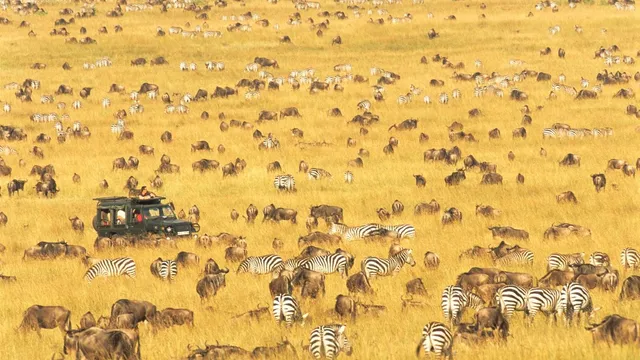
Witness the Great Migration of Wildebeest in Africa
2024-09-23 00:00- The article discusses five significant wildlife migrations, including monarch butterflies in Mexico and wildebeest in Africa.
- These migrations occur at different times of the year, with specific details on locations and conservation efforts.
- Witnessing these migrations offers travelers a unique opportunity to connect with nature and emphasizes the importance of wildlife conservation.
Express your sentiment!
Insights
The article highlights five remarkable wildlife migrations that are essential for nature enthusiasts to witness. Among these, the annual migration of monarch butterflies in Mexico occurs from January to March and again in December, showcasing one of the planet's most captivating natural events. In Africa, the great migration of wildebeest takes place from June to March, offering travelers a chance to experience this breathtaking journey while staying in luxury tented camps in the northern Serengeti. Additionally, the migration of bats in Moab, Utah, occurs from August to October, as these creatures transition from summer feeding grounds to winter hibernation. This event is celebrated with various activities, including bat-themed events and educational programs. In Jamaica, conservation efforts are underway to protect baby sea turtles, ensuring they safely reach the ocean. Collaborations between local authorities and organizations like the Sandals Foundation focus on community engagement and environmental protection, making this a vital initiative for nature lovers. These migrations not only provide unique opportunities to connect with nature but also highlight the importance of conservation efforts in preserving these incredible wildlife journeys. Each migration offers a distinct experience, encouraging travelers to explore diverse ecosystems and cultures while fostering a deeper appreciation for the natural world.
Contexts
The Great Migration of wildebeest in Africa is a significant event that showcases the natural behaviors of wildlife in response to environmental changes. This migration is influenced by various factors, including the availability of food and water, which are critical for the survival of the wildebeest population. In recent years, the global rhino population has seen a slight increase, particularly in white rhinos, despite a rise in poaching incidents, especially in South Africa. The ongoing threat from poaching, driven by demand for rhino horns, poses challenges to conservation efforts, which are essential for maintaining biodiversity in the region. Additionally, the success of rewilding efforts, as demonstrated by Azi, a lion that learned to hunt zebras after being relocated to South Africa, highlights the importance of conservation initiatives. Such efforts not only support the recovery of individual species but also contribute to the overall health of ecosystems that wildebeest and other wildlife depend on during their migrations. Understanding these dynamics is crucial for the protection of wildlife and the preservation of natural habitats, ensuring that events like the Great Migration can continue to occur in the future.